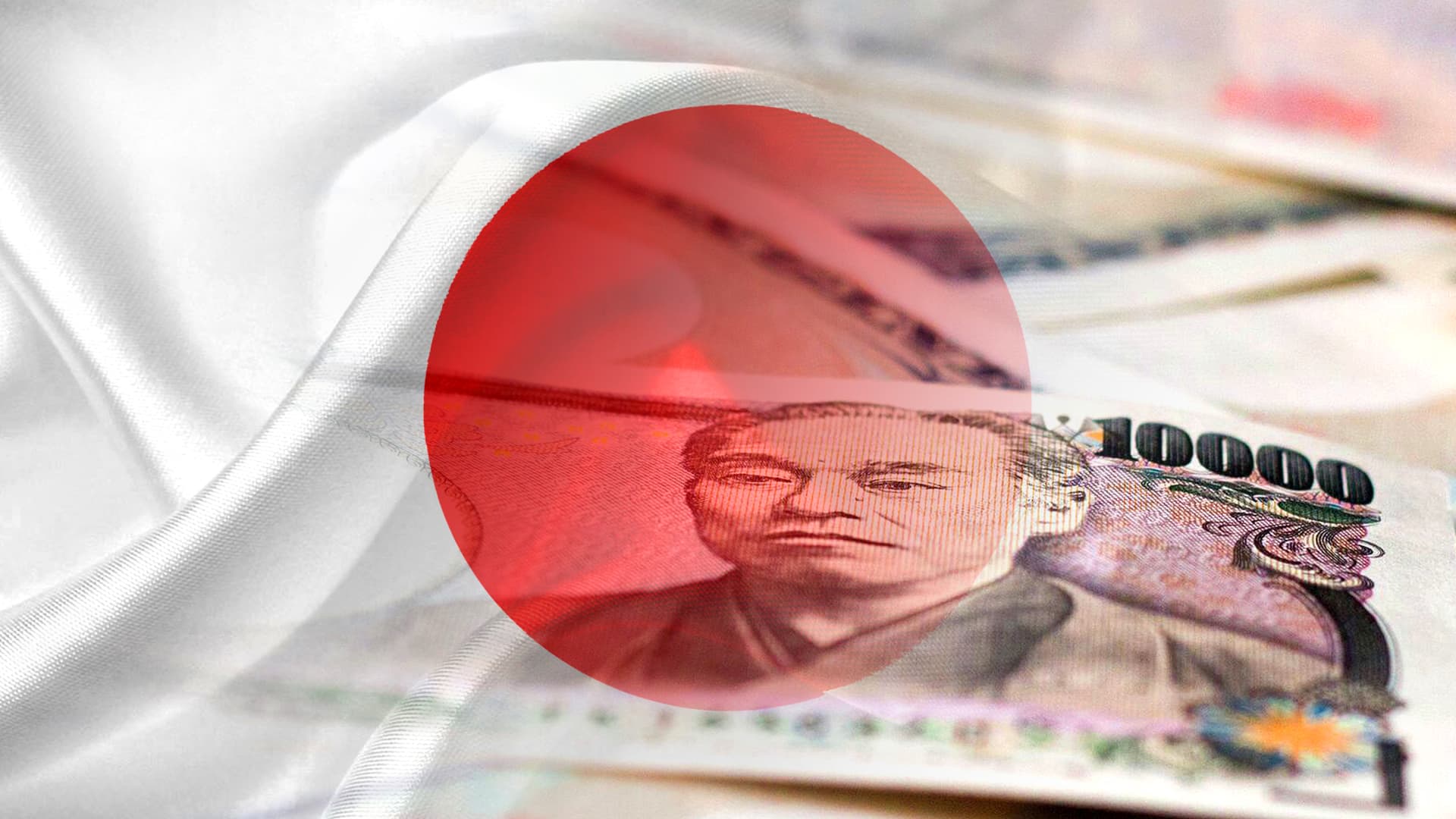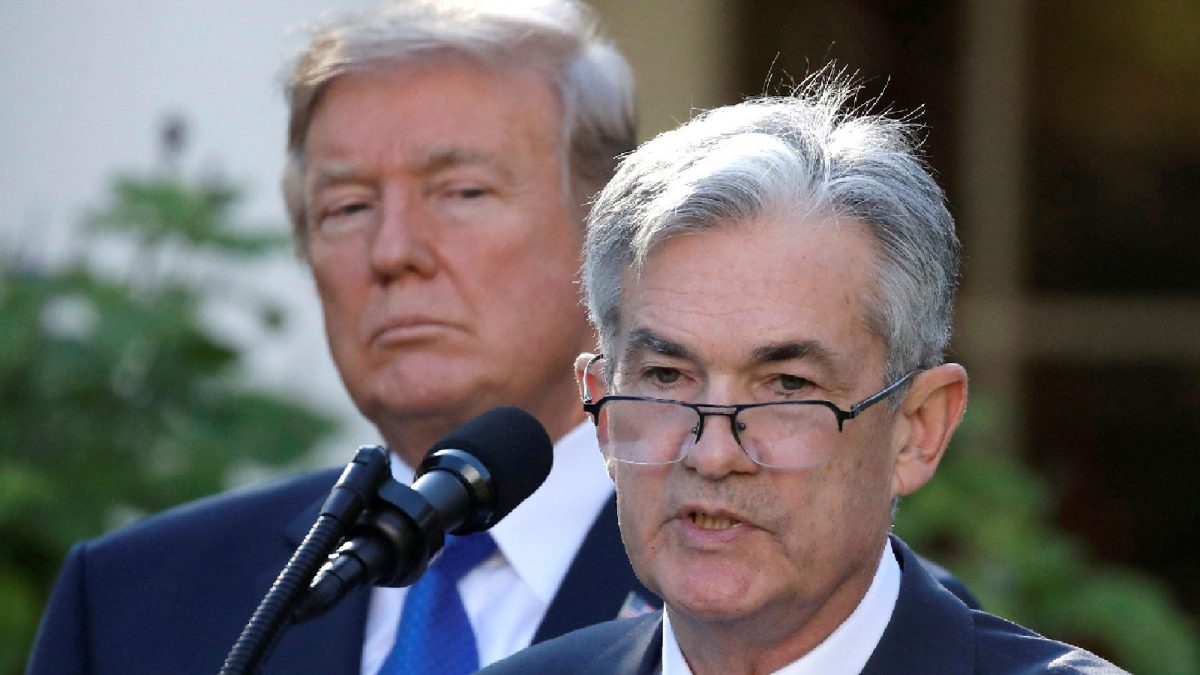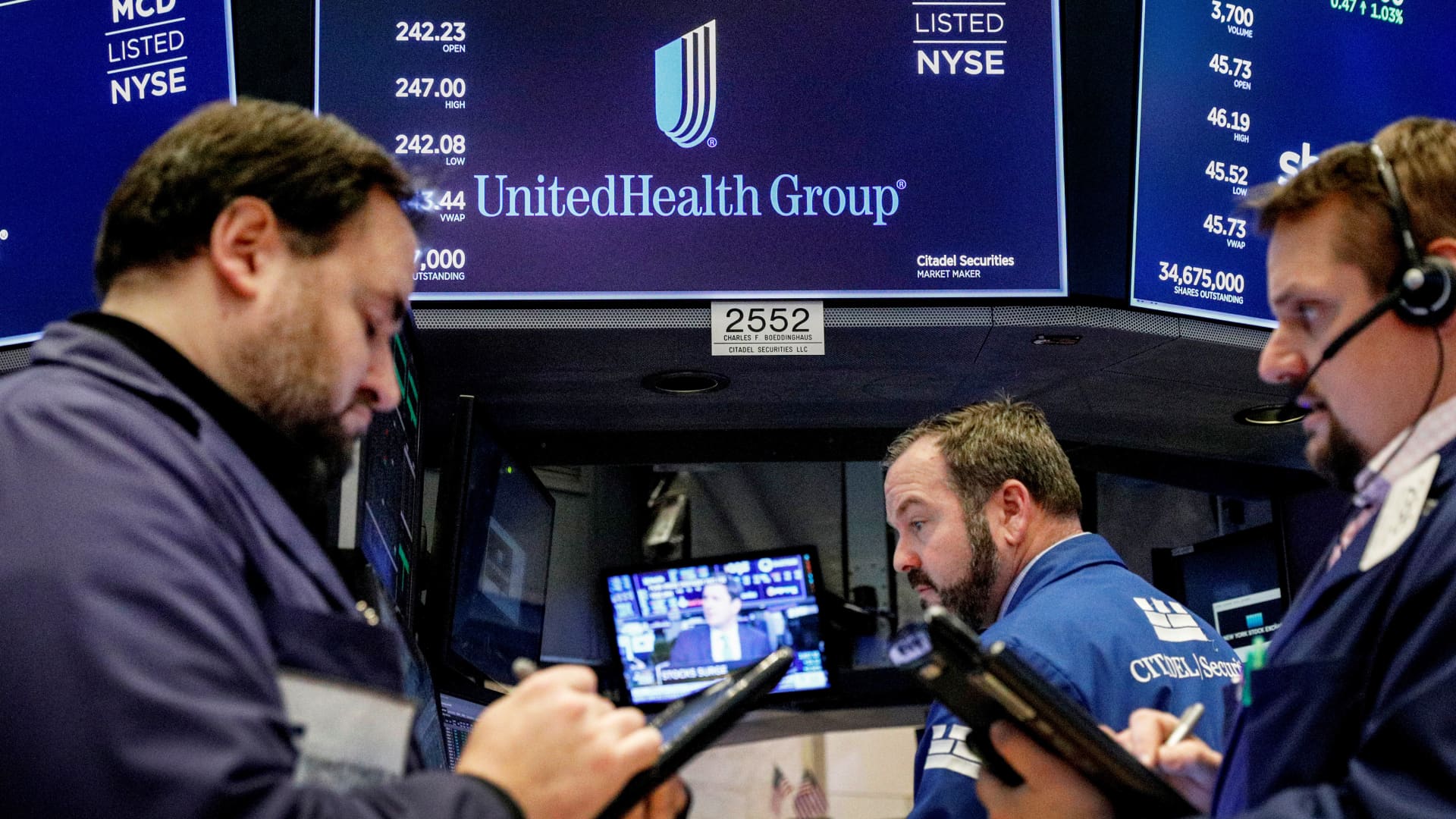These should be wonderful times at Finca El Puente, a coffee plantation carved into the mountains of southwestern Honduras. On world markets, the price of ordinary coffee has more than doubled over the past year. The specialty varieties of coffee harvested at the farm have long commanded a hefty premium, reflecting their status as the source of aromatic brews savored like fine wine from Seattle to Seoul. On a recent afternoon, a buyer from Malaysia was visiting to taste the latest offerings.
Yet the owners of the operation — Marysabel Caballero, a fourth-generation coffee farmer, and her husband, Moises Herrera — are increasingly apprehensive. The costs of production have swelled. They must pay extra wages to attract scarce workers; fertilizer has gotten more expensive. Their crop has been ravaged by ill-timed rains and volatile temperatures. Even after the surge in prices, they are likely to earn less this year than last.
They brood over the possibility that high prices may prompt some coffee drinkers to limit their consumption, substituting cheaper products like soda and energy drinks to satisfy some of their caffeine craving.
The further into the future they contemplate, the greater their concern. More than anything, they worry about what is propelling prices higher: climate change, which has diminished the supply of coffee around the globe via rising temperatures, droughts and excessive rains — most recently in Brazil and Vietnam, the world’s two largest coffee producers.
This is what generates anxiety at coffee plantations around the planet. Whoever benefits from rising prices today may be destroyed by the next calamity tomorrow.
Finca El Puente’s crop was damaged by a cold snap in December and January, followed by late rains that dissuaded their workers from venturing into the plantations to pick ripe fruit. Given this, they see record prices less as a windfall than a manifestation of unfolding troubles.
“For us, producing coffee is our life,” said Mr. Herrera, 58, as workers hoisted 100-pound sacks of freshly harvested coffee beans, piling them atop stacks in his mill for processing. “A lot of producers are starting to lose hope.”
Some see more expensive coffee as a corrective to an international system that has long underpaid producers, having the potential to rectify generations of injustice and environmental destruction.
“Older methods of production have stripped soil health and fertility, and they don’t allow for resilience against climate change,” said Amanda Archila, executive director of Fairtrade America, a Washington-based nonprofit that establishes environmental and social standards for coffee producers, certifying those that abide and connecting them with world markets at guaranteed minimum prices. “Higher prices are where we need to go, pricing that allows these farmers to invest in the future of coffee.”
Sixty percent of the world’s coffee is produced by an estimated 12.5 million people working on farms no larger than 50 acres — and most far smaller than that — according to World Coffee Research, a nonprofit organization that promotes sustainable farming practices. Some 44 percent of these so-called smallholders are living below the World Bank’s measure of poverty.
If farmers earn more, the thinking goes, they can shift into varieties of coffee that are resilient in the face of rising temperatures and variable rainfall. They can plant shade trees to protect their soils.
Then, they will be better positioned to ride out the wild swings in prices that have for centuries governed international commodities markets, managing their plantations for the long haul.
Much in the way that the pandemic disrupted global commerce, prompting scrutiny of supply chains for crucial items like pharmaceuticals and computer chips, high coffee prices have sharpened focus on the conditions shaping the production of coffee.
The question is whether this renewed attention will translate into change.
Chaos in the Market
The history of coffee is in no small measure the story of exploitation in pursuit of expanding supplies to drive prices lower.
Colonial empires established plantations in Asia and South America to satisfy demand in Europe and North America. They enslaved African laborers and seized land from Indigenous communities. They hacked away forests to clear ground for more coffee trees. Human misery and environmental devastation proved the cost of turning coffee from a luxury good into a staple.
Even in modern times, the enterprise has largely revolved around scale and abundance. Coffee harvested and processed into green beans from Colombia to Kenya has been shipped to boutique roasters and vast agribusiness conglomerates in wealthier countries. It is a chain connecting laborers who earn as little as $2 a day in Latin America, Asia and Africa to people who hand over more than twice that for a single cappuccino in Copenhagen, Dubai and Boston.
The bulk of the profits have traditionally been captured by major coffee roasters. Their profits have grown along with the price of coffee beans, even as many growers have failed to capture a piece of the extra bounty.
J.M. Smucker Company, whose brands include Folgers and Cafe Bustelo, saw its American retail sales of coffee increase 3 percent between August and October, with profit margin exceeding 28 percent. Company executives told stock analysts that they had succeeded in passing on the extra costs of their beans to customers. (The average retail price of ground roast coffee has risen 15 percent in American cities in the past year, breaching $7 per pound, according to federal data, and experts widely anticipate greater increases to come.)
“Coffee, as we all know, it’s a pass-through category,” said the company’s chief executive, Mark Smucker, meaning that these extra costs can be easily foisted on to consumers without losing sales, usually because a product is seen as essential. “We’ve been very pleased with our performance in the quarter, despite the fact that we continue to see significant inflation.”
The events of recent years have revealed the vulnerabilities in the system, while introducing new ones. The droughts in Brazil and Vietnam combined with disruptions in international shipping have made coffee beans scarce.
Changing regulations have also increased uncertainty. A new European law aimed at limiting deforestation has forced producers of many commodities — coffee included — to prove that they are not cutting down trees, injecting bureaucracy and uncertainty into the trade.
Citing the prospect of chaos, commodity producers successfully lobbied the European Union to delay the law until next year. Some roasters have stockpiled coffee ahead of the law taking effect, increasing demand for beans from around the globe and driving prices higher.
Some plantations in Vietnam, which specialize in lower-grade robusta coffee, have been shifting instead into durian, a uniquely pungent (some say stinky) fruit, to cash in on rising demand in China. This, too, has limited coffee supply, pushing up prices. As robusta prices have risen, roasters that traditionally have purchased cheaper coffees have moved into higher-grade Arabica varieties, pushing up those prices.
The distress of financial players central to the coffee trade has also generated a feedback loop of rising prices.
Around the world, traders who buy coffee beans from farmers and export them to roasters typically lock up their supply months and even years in advance using so-called futures contracts. If the world price goes down, they may receive less from their customers than the amount they are obligated to pay farmers for coffee beans. To hedge against that, they purchase so-called short positions on futures markets — essentially, bets that prices will fall. If prices drop, their gains on these short positions offset some of the losses on their sales.
But in recent months, the price of coffee has been rising so steeply that short positions have become major losers. The financial brokers who handle such trades have demanded that exporters hand over more cash toward settling up their losses — a margin call, in financial parlance.
From Brazil to Nicaragua, margin calls have pushed some exporters into bankruptcy. Even those who survive are now inclined to guard their cash zealously, limiting their purchases of coffee. That has diminished the available supply of beans for roasters, pushing prices higher and leading to more margin calls.
“This is a huge problem with the majority of exporters around the world,” said Luiz Paulo Pereira, founder and chief executive of CarmoCoffees, an exporter in Brazil.
“Given the perpetual threat that financial firms will demand more money to cover their short positions, he and other traders are hanging on to what cash they have.”
That makes them reluctant to buy coffee. Instead of their usual long-term deals, they are brokering transactions only when a farmer has beans immediately ready for sale to a roaster willing to purchase them without delay. This avoids tying up their cash while they wait to get paid. But it is making coffee even more scarce, sending prices higher. And many farms are holding on to their crops in anticipation of prices going higher still — a self-fulfilling prophecy.
“The high price is like the flashlight in the dark,” said Vern Long, chief executive of World Coffee Research. “‘Look, folks, we have an issue.’ How do we use this to make sure farmers have stable and sustainable production?”
A Sustainable Model?
Over the last two decades, Sergio Romero has fashioned an answer to that question.
A fourth-generation coffee farmer in the town of Corquin, Honduras, he had seen the devastation that climate change had wrought on surrounding plantations. Coffee trees were exposed to the sun. Rising temperatures were stressing plants and diminishing yields. Surges of rain were washing away nutrients, depleting soils.
An agricultural engineer by training, Mr. Romero began studying how to shelter his own crop from the elements. He proposed adding a canopy of taller trees like pine and mahogany to cast shade over his coffee. That would keep moisture in the soil and preserve the health of the roots, allowing them to take up more water and nutrients. He made plans to intersperse fruit trees — mangoes, oranges, lemons and plantains — diversifying his harvest while adding additional roots to preserve soil.
In 2009, Mr. Romero persuaded his wife, his parents and his brother to pool their land holdings, turning their 140 acres into a collective plantation that would pursue this new mode of operation, with sustainability as their lodestar.
He organized two dozen other farms into a cooperative called Cafico. Members could share techniques and operate a nursery to produce suitable varieties of coffee plants and shade trees. They financed the construction of a mill to dry and process their harvest and sell the crop. They eschewed chemical fertilizers and pesticides, dedicating themselves to organic production.
His pitch encountered initial resistance from potential members, given the arithmetic: Twenty percent higher costs for planting, while yielding 25 percent less coffee. But the trees would last twice as long, perhaps a quarter-century. And the coffee would be higher quality.
“Everyone said we were crazy,” said Mr. Romero, 45. “Now, they are copying the model.”
Cafico followed through on Mr. Romero’s conception. Later, it joined Fairtrade, gaining the right to include the certification body’s logo on its bags of coffee beans — a useful marker of social acceptability, especially in Europe, and the source of greater returns.
“It’s the seal that guarantees us a fair price,” Mr. Romero said.
Under Fairtrade’s model, the cooperative’s sales include a premium payment in recognition of the higher wages it pays to its workers, and the sustainable farming practices it employs. Globally, such premiums reached about $64 million in 2023.
Cafico has financed community projects, including the renovation of a local school and a health clinic, focused on maternal and child health, with a 24-hour emergency room — a rarity in rural Central America.
On a recent morning, Mr. Romero stood on a sunshine-dappled hillside, looking down on rows of coffee trees with thick green leaves, their branches bursting with fruit. The cherries, as they are known, contain the beans.
He pointed toward the ground, at a layer of material covering the soil, the dried husks of the cherries. Previously, the mill extracted the beans and then discarded the husks in a nearby river, tainting the local drinking water supply of some. Now the cooperative turns them into compost, and distributes it free to member farms.
“That is like a sponge that retains the water,” Mr. Romero said.
He pulled out his phone and checked the coffee futures price on the commodity exchange in New York. It was up more than 16 percent that day, reaching nearly $4 a pound. He looked stunned.
Cafico produces specialty coffee that sells at a considerable markup over the market price. The cooperative was on a pace to see its earnings grow by at least 25 percent this year, Mr. Romero said.
But what did the price spike mean for the mission to make coffee more sustainable? If farmers with scarce capital could simply carry on with their traditional practices and sell at unthinkable prices, where was the incentive for them to plant shade trees of their own and limit the yield?
Mr. Romero dismissed such concerns. Cafico was sitting on 80 new applications to join.
Yet as exporters scramble to secure beans, they are testing the bonds of the cooperative structure.
At her farm near Corquin, Esperanza Torres Melgar, 59, has grown accustomed to traders showing up and offering immediate cash for her freshly harvested beans, as opposed to having to wait for it to be processed by another Fairtrade-certified cooperative, Proexo.
She said she always declines.
But other farmers are giving in to the temptation for cash in hand without delay, quietly selling outside of the cooperative structure.
Only about one-third of the coffee harvested by Fairtrade-certified cooperatives is sold on Fairtrade terms, with the applicable premium. The rest changes hands at ordinary prices. Even in the wealthiest countries, those willing to pay extra for coffee whose production ostensibly does not come at the expense of forests or vulnerable workers are vastly outnumbered by those who just want a better price.
Fairtrade spends a lot of its time trying to get its wares onto more store shelves. But the rising price of coffee makes this a tougher sell. Somewhere between here and infinity is a point at which even the most concerned coffee drinkers — ardent environmentalists, and those most sensitive to accounts of plantation working conditions — may balk at having to pay more for the official imprimatur of the wholesome nature of their consumption.
‘Only God Knows’
In one direct way, higher coffee prices are proving of at least some benefit: by putting more cash into the hands of the people engaged in producing it.
Nicolas Perez Perez, 45, a father of five, has been picking coffee since he was 10. On a recent morning, he leaned against a coffee trunk at a Proexo farm, using his weathered fingers to separate cherries from the branches and depositing them into a plastic bucket.
A migrant worker, Mr. Perez lives five hours away. He was sleeping in a dormitory block during the harvest season and earning 60 Honduran lempira (about $2.34) per gallon, about 20 percent more than last year.
The extra cash was welcome, but it did not change the bare facts of his existence. At home, his family eats meat once a week.
“We never go hungry, but we never advance,” he said. “There’s no exit for us. There is no pathway forward.”
For those in control of land, the increased rewards of higher prices come accompanied by mounting yet incalculable risks.
Josefina Lopez, 57, owns a six-acre farm in a village in rugged highlands above the town of Marcala. She uses a sliver of her land to grow corn and beans for her household — herself and four grandchildren. The rest is devoted to coffee, the trees looking out on an open field and on to a jagged ridge that forms the border with El Salvador.
Ms. Lopez picks her own coffee, selling the beans in 100-pound sacks to a local cooperative that trucks them to a mill for processing. Since she began harvesting her crop in mid-November, she has been receiving 1,080 Honduran lempira (about $42) per sack, more than three times the previous harvest.
But last year, she sold 86 bags. This year, she is on a pace to sell only 26, because of the fungus known locally as “la roya,” or coffee leaf rust, which has for decades devastated plantations in Central America. The plague is assisted by climate change. Erratic rains and higher temperatures have allowed it to spread to higher elevations, reaching even farms like Ms. Lopez’s, which sits nearly 6,000 feet above sea level.
On a recent morning, just after the sun seeped over the ridge, she and two of her grandchildren — who were out on school holidays — used their hands to tilt the slender trunks of the coffee trees toward the ground, bringing the fruit clustered at the top within reach. They plucked the red ones and deposited them into plastic sacks. They left the green ones to ripen. They discarded the brown ones, those that were shriveled by the fungus.
On many trees, the brown ones predominated.
“We’re afraid we could lose everything,” Ms. Lopez said.
She is saving for an indoor toilet to replace her outhouse. She hopes to keep her grandchildren in school through university, but she does not count on it.
She has contemplated expanding her plantation to take advantage of high prices. But it takes three years for a newly planted coffee tree to yield its first harvest. She has no confidence that the prices will last. The conditions that determine her income are draped in mystery.
“The prices come from outside,” she said. “I’m always hoping the prices will be higher, but only God knows.”
At Finca El Puente, they have achieved international success. Their prized coffee is sold at high-end retailers around the globe, including Intelligentsia and Stumptown in the United States. Yet they are now mulling a previously unthinkable prospect: reducing their acreage.
So many local people have headed north toward to the United States in search of work that they struggle to hire needed laborers, even at sharply higher wages. In response, they have mechanized much of their mill. But there is no machinery to hold off the bouts of fierce heat and cold.
“This is the worst year,” said Ms. Caballero, cognizant of the strangeness of such an assertion in a time of record prices.
She and her husband cherish their lives spent outdoors, beyond reach of the internet and its buzzing apps.
Even inside the mill, standing beneath giant steel drums that turn slowly, drying the beans within, they stop to take a whiff, the sweet, smoky fragrance permeating the works.
“We love coffee,” said Ms. Caballero. “We’ve always thought that we are going to die growing coffee. We are happy in this way.”
But they are no longer certain that it will last.















































